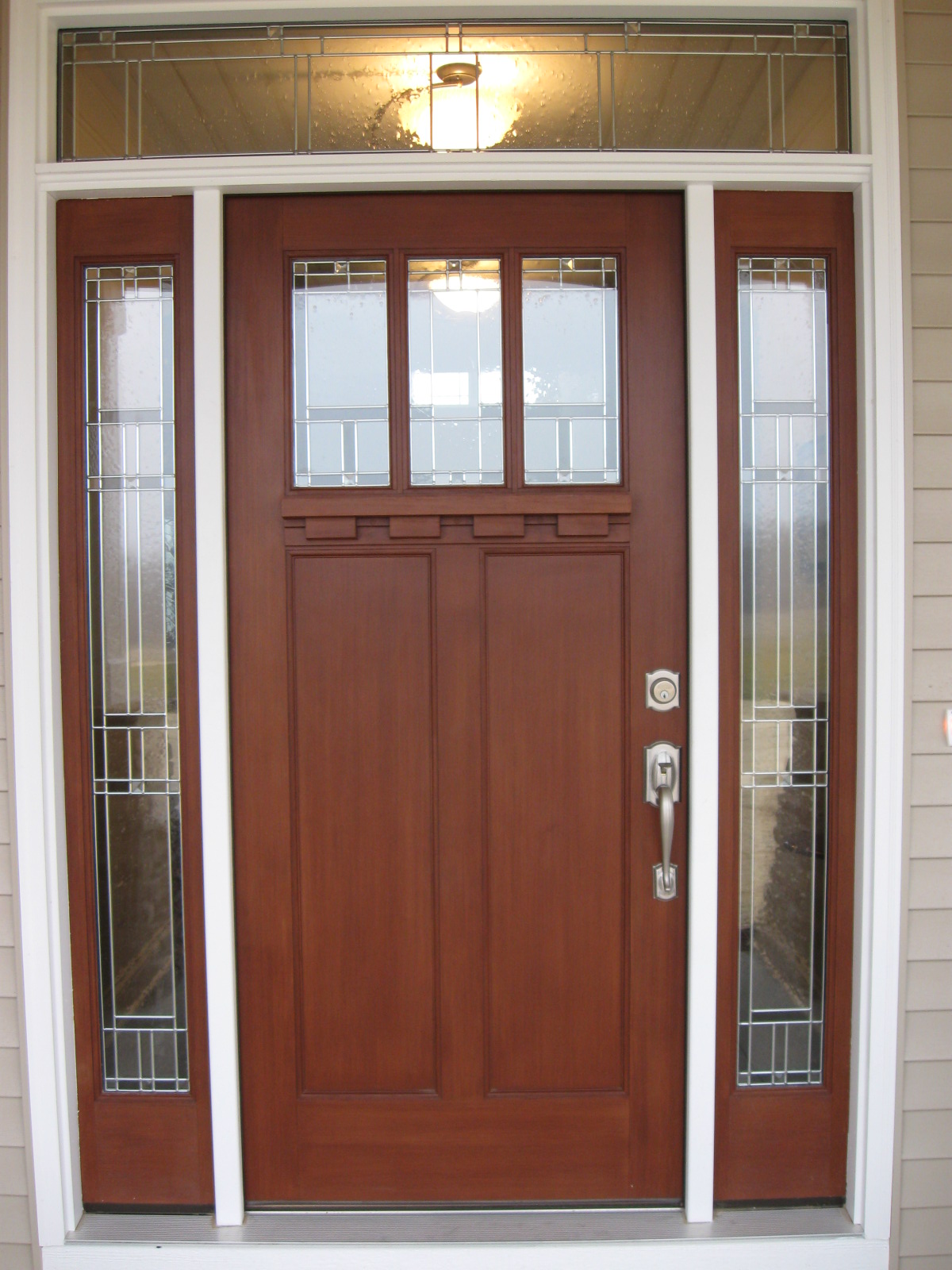How to Install a Prehung Door
0 Comments | Posted by armchairbuilder in Build Your Own Home, Owner-Builder, Quality Check
Once you’ve reached the frame stage when building your new dream home, it’s important to know how to install a prehung door. In our last post in our how to build a home blog series, we covered the framing activity. Most professional home builders have their rough carpenter install the exterior doors while framing the home. So it’s important that owner builders know how to check the door installation properly to avoid future problems.
What Exactly is a Prehung Door?
It’s a door that comes already installed in the jambs. Because the jambs are already installed, the actual installation time is cut down considerably…assuming the installer knows how to install a prehung door.
Potential Problems with Exterior Doors
There are a few potential problems that can occur if your exterior doors aren’t installed properly.
- Water Leaks – All exterior doors should have the proper flashing and sealants to keep water out of the home. Even if the door is located under a porch roof, it will most likely be subjected to water when cleaning.
- Sticking/Rubbing – If the jamb isn’t secured properly into the rough opening, it may lead to displacement over time. This will require constant adjustments to allow the door to clear the jambs and keep the locks working properly.
- Air Leaks – Caulks, sealants and tape should be used properly and threshold adjustments made to keep air infiltration around the door and frame to a minimum.
- Baking of Finishes – Check manufacturer directions to see what restrictions may apply to storm door installations. A storm door can create extreme heat from the sun which can melt paint and deform the main exterior door slab.
How to Install a Prehung Door Properly
Below are builder tips on how to install a prehung door properly. Rather than giving you a step-by-step installation guide, we have given a quality checklist for the owner builder to review the carpenter’s work.
- Manufacturer Directions – Make sure you and your framing contractor read and understand the manufacturer directions showing how to install a prehung door. Just like your windows, each door is different and requires different installation methods. These steps are important to follow to make sure your warranty stays valid. Some doors have flanges and some don’t. Some doors have adjustable hinges and thresholds while others don’t. They are all different so it’s important to understand the particular installation methods required for each door.
- House Wrap – If you are using house wrap on the exterior of your new , it’s important to make sure it wraps into the rough opening of the door and all joints are taped properly. If the exterior doors have nailing flanges, you will want the house wrap over the door to lap over the top flange. It’s also important to make sure your house wrap is lapped properly on the wall above the door and seams are all taped. If the door has nailing flanges, these should be taped around the entire perimeter. Make sure a high performance, window and door flashing tape is used. The side flanges should be taped first to the housewrap and then the top flange to the wall sheathing while the housewrap comes down over top of the taped flange.
- Pan Flashing – Some door manufacturers require pan flashing to be installed under the door at the threshold to catch any water that might get through the threshold and door assembly. Check the manufacturer’s directions for this requirement. Either way, you may want to add this flashing for an added layer of protection against water leaks…especially if your door is directly exposed to the weather (and not under a porch roof). Pan flashing consists of a continuous piece of aluminum or plastic formed to catch any water that gets through the door assembly. At a minimum, a continuous, thick bead of sealant should be used under the threshold to cut down on air leakage.
- Back Caulk Moldings – When setting the prehung door into place, it’s a good idea to apply caulk to the backside of the moldings to help seal the unit to the wall.
- Plumb/Level/Square – It’s important to check for plumb, level and square when installing a door. If any of these are out of line, the door operation will be affected.
- Reveals – The reveals between the door slab and the jambs should be consistent.
- Secured – The door should be shimmed at the top, middle, and bottom of each side jamb and sufficiently long screws should secure the jambs to the rough opening. It’s also a good idea to install at least one long screw at each hinge to provide extra holding power into the studs. Depending on the size and style of door, the force on the hinges can be significant when opened. Make sure the top jamb isn’t shimmed and has a gap to allow space for settlement of the header. If no space is left, any settlement above will cause the door to bind.

- Threshold – Some exterior doors come with an adjustable threshold. Make sure it has been adjusted properly to seal to the sweep on the bottom of the door. Check the operation of the door to make sure it doesn’t bind after raising the threshold.
Hopefully these tips on how to install a prehung door will help you perform a thorough quality check on your carpenter’s workmanship. If you are thinking of building your own home, stop by our owner builder resources page for our builder tips and secrets to help you save money, time and hassles. We have a special promotion going on at our ESTORE for a limited time.


